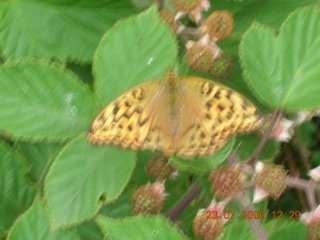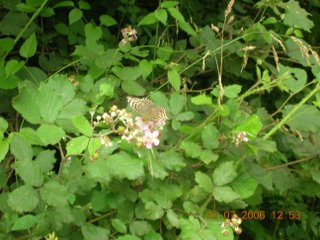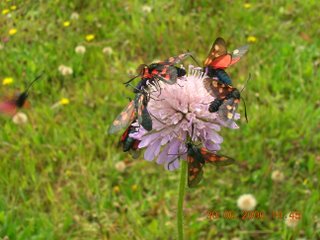
Close to Babcary Meadows is Perry Meade. The map on the SWT web site is very good but I think the grid reference for limited parking at the side of the lane should be 563303
Find the lane to Foddington from the B3153 and head south to the little bridge over the River Cary shown below.The river is a very small stream at this point. Park nearby and find the signpost to Lovington by the side of the lane. One field away is the reserve. If anybody has explored the reserve please share your observations with us.

I didnt have time to do more than find the reserve before going on to Green Down. There are two access points and the western end close to the main line railway bridge is shown on the photo below.

More details on the SWT web site. The reserve has been closed to all visitors from June 3rd till July 16th because of the prescence of the rare Large Blue butterfly.
See SWT web site for details:
http://www.somersetwildlife.org/reserve_49.php
Another site which deserves a longer visit!
On 23rd July I joined an organised walk in Breech Wood near High Ham for a very successful sighting of vaious species of butterflies including the quite special Silver-washed Fritillary
 and its even rarer form known as Valezina. My photo is not very good but can be recognised I think.
and its even rarer form known as Valezina. My photo is not very good but can be recognised I think. 










